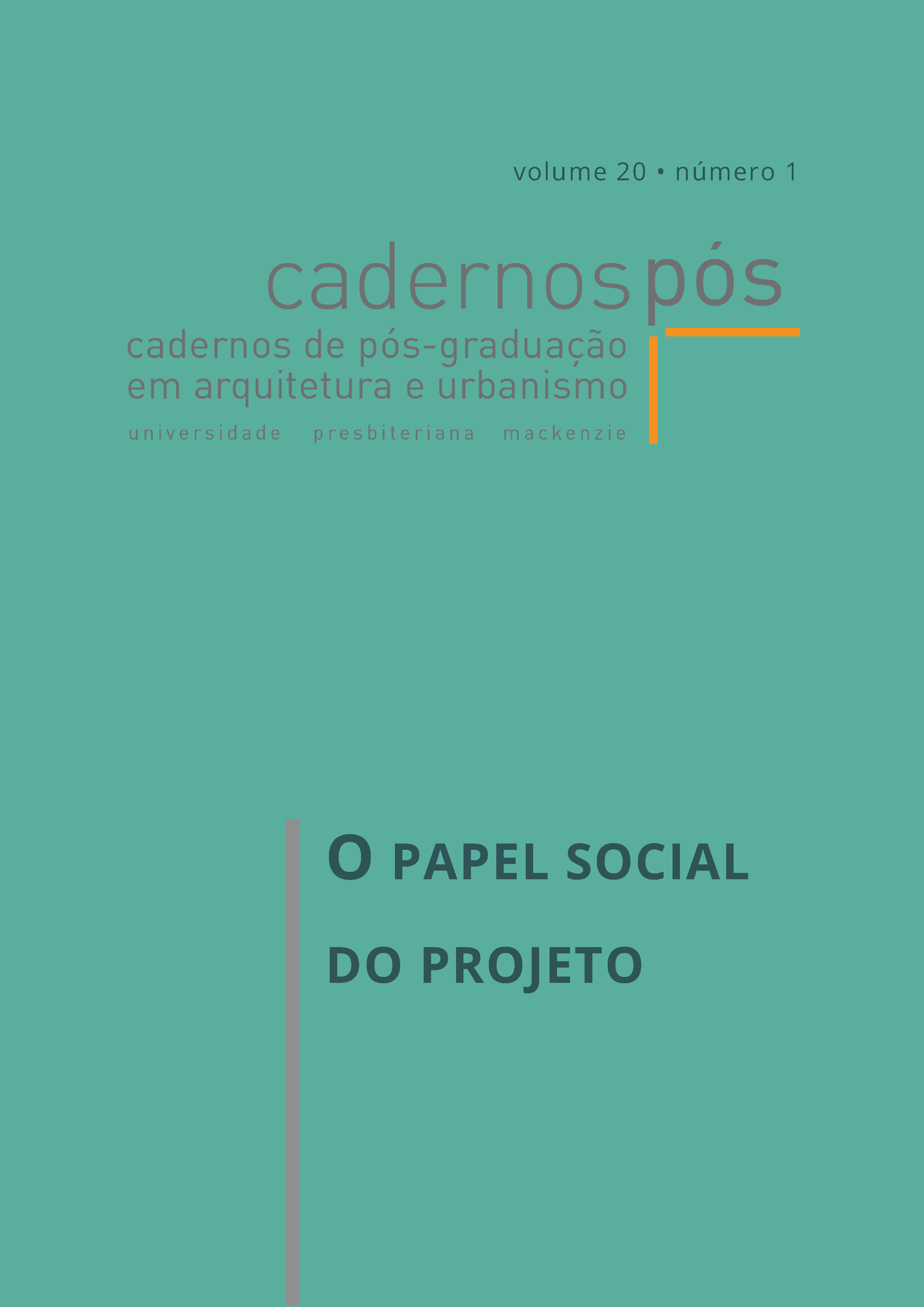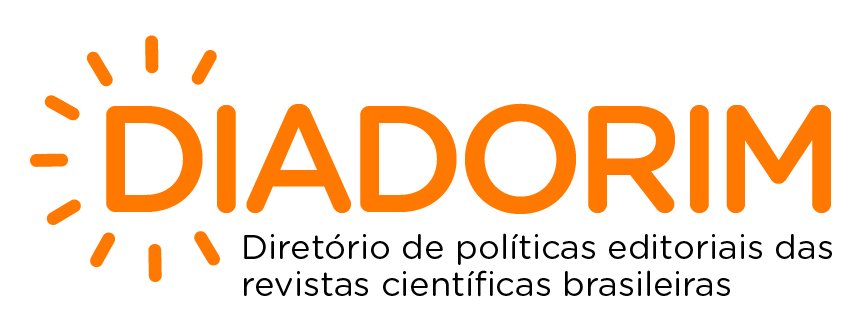Free Spaces System for Intercultural Dialogues
Collaborative Design Process and Valuing of the Kaingang People
DOI:
https://doi.org/10.5935/cadernospos.v20n1p88-106Keywords:
Kaingang people; Free space system; Culture; City history; Participatory project.Abstract
The Kaingang indigenous population inhabits the space that comprises the center in the municipality of Chapecó-SC, since before the formal configuration of the city. However, due to the urbanization process, such a community had its historical trajectory and its relationship with the city made impossible by actions originating mainly from the government. In order to contribute to the transformation of this context, a project for a system of open spaces for intercultural dialogues was elaborated, in a collaborative way with the indigenous community, which proposes to tell the history of the city from the perspective of its traditional people through interventions at different scales. This article intends to explore the possibilities of historical and cultural valorization through urban interventions, as well as to present the design strategies adopted with the objective of valuing the memory of indigenous elders in the design process, revealing its educational and social character. For that, the Kaingang People and their relationship with the historical construction of the city, the collaborative strategies used in the design process, the spatial results obtained and their relationship with the appreciation and visibility of the Kaingang culture are presented.
Downloads
References
BORBA, T. Actualidade indígena. Coritiba: Typ e Lytog a Vapor impressora Paranaense,1908.
CAMPOS, S. A voz de Chapecó: Artigo de Antonio Selistre de Campos - 1939- 1952. Centro de Memória do Oeste Catarinense (org.). Chapecó: Argos, 2004
DILL, F. M. Linguagem Socioespacial: A dimensão espacial do modo de viver Kaingang. 2019. Tese (Doutorado em Arquitetura e Urbanismo)—Programa de Pós-Graduação em Arquitetura e Urbanismo, Universidade Federal de Santa Catarina, 2019.
GIDDENS, A. Modernidade e identidade. Rio de Janeiro: Zahar, 2002.
HALL, S. Quem precisa de Identidade? In: SILVA, T. T. Identidade e diferença: a perspectiva dos estudos culturais (p. 103-133). Petropolis: Vozes, 2005.
JUNIOR, A. G. Estudo Etnográfico sobre Alcoolização entre os Índios Kaingang da Terra Indígena Xapecó: das Dimensões Construtivas à Perturbação. 2010. Dissertação (Mestrado em Antropologia Social)–Universidade Federal de Santa Catarina, 2010.
KRESÓ, P. O Kiki permanece. In: TORAL, A. EG JAMEN KY MU: textos KAINGÁG. Brasília: APBKG/MEC/PNUD, 1997, p. 80-87.
KUPER, A. Cultura, diferença, identidade. In: A. KUPER. Cultura: a visão dos antropólogos. Tradução de Mirtes Frange de Oliveira Pinheiros. Bauru: EDUSC, 2002, p. 287-318.
LYNCH, K. A Imagem da Cidade. Tradução Jeferson Luiz Camargo. São Paulo: Martins Fontes, 1997.
MAGNOLI, M. Em Busca de “Outros” Espaços Livres de Edificação. Revista Paisagem Ambiente: Ensaios, São Paulo, n. 21, p. 141-174, 2006.
MANN, P. H. Métodos de investigação sociológica. Rio de Janeiro: Zahar, 1970.
MEIHY, J. C. Manual de História Oral. São Paulo: Edições Loyola, 1996.
NIMUENDAJÚ, C. Etnografia e indigenismo: Sobre os Kaingang, os Afaié-Xavante e os índios do Perá. Campinas: Unicamp, 1993.
PRETO, M. H. de F. Sistema de Espaços Livres Públicos – uma contribuição ao planejamento local. 2009. Dissertação (Mestrado em Arquitetura e Urbanismo)-Faculdade de Arquitetura e Urbanismo, Universidade de São Paulo, 2009.
PROSHANSKY, H. M. Place-identity: Physical world socialization of the self. Journal of Environmental Psychology, v. 3, n. 1, p. 57-83, 1983.
RAPOPORT, A. Hechos y Modelos. In: G. BROADBENT. Metodologia del Diseño Arquitectonico. Barcelona: Editorial Gustavo Gili, 1971, p. 297-323.
RHEINGANTZ, P. A. Observando a Qualidade do Lugar: procedimentos para o trabalho de campo. Rio de Janeiro: UFRJ, 2009.
SANOF, H. School Design. New York: John Wiley & Sons INC, 1994.
SANTOS, M. A Natureza do Espaço. São Paulo: Hucitec, 1998.
SCHIMITZ, P. I.; BEBER, M. V. Em busca dos antepassados Kaingang. In: Antes do Oeste Catarinense: Arqueologia dos povos indígenas. Chapecó: Argos.2011.
SECRETARIA DE PLANEJAMENTO URBANO. Mapa do perímetro urbano de Chapecó. Prefeitura Municipal de Chapecó, 2018.
TOMMASINO, K. et al. Relatório I: Eleição de área para os Kaingang da Aldeia Kondá. Chapecó: Funai, 1998.
TOMMASINO, K. et al. Relatório II: Eleição de área para os Kaingang da Aldeia Kondá. Chapecó: Funai, 1999.
TOMMASINO, K.; FERNANDES, R. C. Povos indígenas no Brasil. São Paulo: Educ, 2001.
TUAN, Y. F. Espaço e Lugar: a perspectiva da experiência. São Paulo: Difel, 1983.
TYLOR, E. Primitive Culture. Londres: John Mursay & Co, 1958.
UNWIN, S. A análise da arquitetura. Tradução Alexandre Salvaterra. Porto Alegre: Bookman, 2013.
ZANIN, N. Z.; DILL, F. M. Educação escolar indígena manifestada em intervenção arquitetônica: reflexões a partir de uma escola Kaingang. Anais do XVI Encontro Estadual de História da ANPUH-SC. 2016.
Downloads
Published
How to Cite
Issue
Section
License
Authors who publish in this journal agree to the following terms:
a) Authors retain the copyright and grant the journal the right of first publication, with the Project simultaneously licensed under the Creative Commons Attribution License that allows the sharing of the Project with recognition of the authorship and initial publication in this journal.
b) Authors are authorized to assume additional contracts separately for the non-exclusive distribution of the version of the Project published in this journal (e.g., publishing in an institutional repository or as a book chapter), indicating that it was originally published in this journal, with a link to the article.








 Todo o conteúdo de Cadernos de Pós-Graduação em Arquitetura e Urbanismo está licenciado sob
Todo o conteúdo de Cadernos de Pós-Graduação em Arquitetura e Urbanismo está licenciado sob 